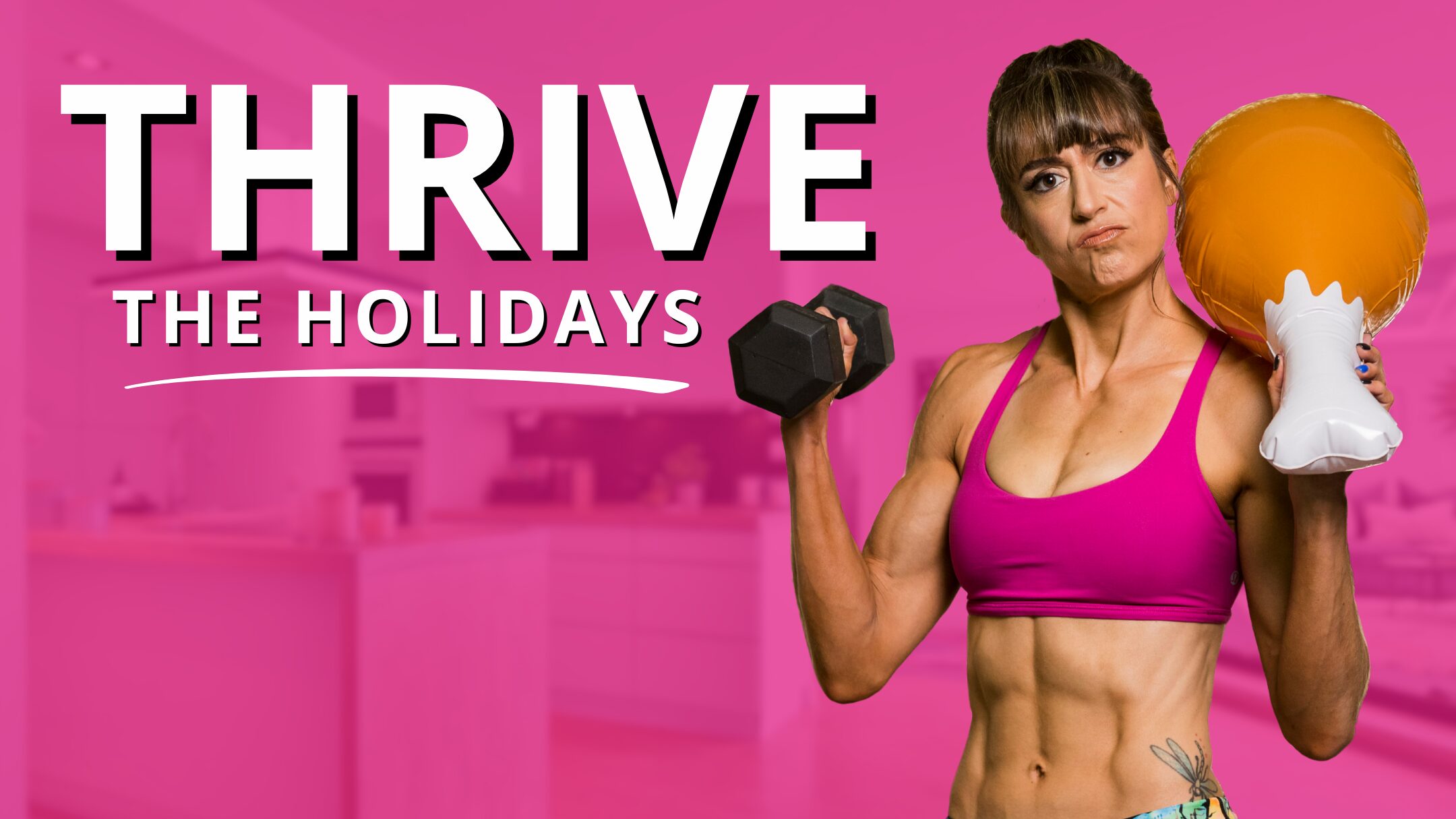No matter how much equipment I have available, I still love including a push up variation in my upper body workouts.
They are an amazing move to target your chest, shoulders, triceps and core.
And not only are they an amazing way to build strength and muscle, but there are so many push up variations you can include to target different muscles more or less based on your needs and goals.
Want to work on shoulder stability or anti-rotational core strength?
Try the push up with shoulder tap.
Want to target your triceps more?
Include a close grip variation.
Want to work your upper pecs extra?
Try a decline variation.
But in thinking through all the different options out there, there was one variation that came to mind as often being underutilized…
The push up plus!
In this video, I want to go over how to do this essential push up variation and ways to modify the move if you can’t do a push up from your toes on the ground.
But first I want to explain why I think this variation is so important to include….

This push up isn’t the fanciest variation out there, but it is one of the most essential to include if you want to be a push up rockstar, improve your overhead press or bench press weights or even avoid neck, shoulder or upper back aches and pains.
It is so important to include because of that simple rounding and scapular protraction at the top of the push up.
This seemingly simple extra movement added on to the basic push up works an often overlooked muscle – the serratus anterior.
The serratus anterior is an essential muscle when it comes to keeping your shoulder blades, shoulders, neck and upper back healthy and happy and functioning correctly!
And the push up plus is an amazing move to work this muscle as it is easier often to target this muscle without letting your upper traps compensate.
Too often our upper traps take over in movements meant to work our serratus anterior, which only perpetuates the aches and pains we have.
This scapular control, and serratus anterior strength, will also translate to better movement of your shoulder blades during overhead pressing and even a better ability to support your shoulders during bench press.
This push up variation is a great way to keep everything healthy and strong as you include more pressing!
So how do you do the push up plus?
While you will be performing almost just a basic push up, you want to give extra attention to the movement of your shoulder blades and even your hands pressure down into the ground.
Our hands are our foundation and better tension through them into the ground can increase muscle activation of our upper body. And by also being conscious of fully gripping the ground with our entire hand we can help avoid wrist, elbow and even shoulder aches and pains.
To do this push up, set up with your feet together and hands just outside your chest. Spread your fingers and flex your quads as you drive back through your heels.
You may even find it helpful to ever so slightly turn your hands out. This can even further help you engage your serratus anterior.
Then pull your shoulders down feeling them unshrug as you engage your back.
With your body in a nice straight line, lower down keeping tension.
Feel your shoulder blades draw toward your spine.
Then at the bottom, push the ground away and feel your shoulder blades move away from your spine.
As you reach the top of the push up, push the ground away a bit extra as if pulling your shoulders forward.
Feel your thoracic spine round up as you try to pull your shoulder blades around your ribs.
You may tuck your chin as you round up to go with the natural spinal flexion.
But do not let your butt go up in the air. You may slightly tilt your pelvis under instead to engage your abs more with the posterior pelvic tilt.
But you really want to focus on pulling your shoulder blades around your rib cage as you push that ground away.
This action really works that serratus anterior.
You’ll then move back into that full plank position and perform the push up again.
Working your press with the freedom to move your shoulder blades and be able to control that full range of motion is what makes this move so amazing for your upper body.
Not to mention you get that little extra core work with the pelvic tilt on top of the fact that the push up is a moving plank!
Now what if you can’t do a full push up from your toes? How can you modify this move?
An incline variation is always a great way to modify while allowing you to train that full push up plank position.
Too often we do turn to knee push ups but this doesn’t teach us to properly engage our legs and drive back through our heels. It can keep us stuck getting stronger at only a modified variation.
It’s why that incline and working down in reps as you lower the incline is so key.
You can use a rack, adjusting the barbell height or even boxes, lowering them down as you progress.
If you are limited on incline options, you can select one that is a bit too high and slow down the tempo.
If you only have one that is too low, consider just the eccentric portion of the movement and start with the “plus” BEFORE you lower down for the rep.
A final tip to modify if you need to work around wrist pain, is to put a mat folded up under the heel of your palm. This reduces the wrist extension demands to make it easier on your wrist.
Bonus Tip:
And one bonus tip if you’re ready for a bit more of a challenge with this move and to test your core strength and stability, try including a dead stop or even hand release at the bottom.
This forces you to really engage prior to pressing back up and even makes sure you work through the fullest range of motion possible without using any momentum!
That press back up from a dead stop is harder than we give it credit for, especially if we are super conscious that everything moves together as if our body were a solid board.
But even as you add in this dead stop or hand lift, don’t rush through the protraction at the top of the push up. Really focus on feeling around your rib cage even working!
So whether you’re looking to mix up your push up work, improve your upper body strength and stability to lift more while avoiding injury or just want to build up to that first full push up from your toes, this is an amazing push up variation to include in your workout routine!
And for more tips to improve your push ups, here are two videos to help!



0 Comments